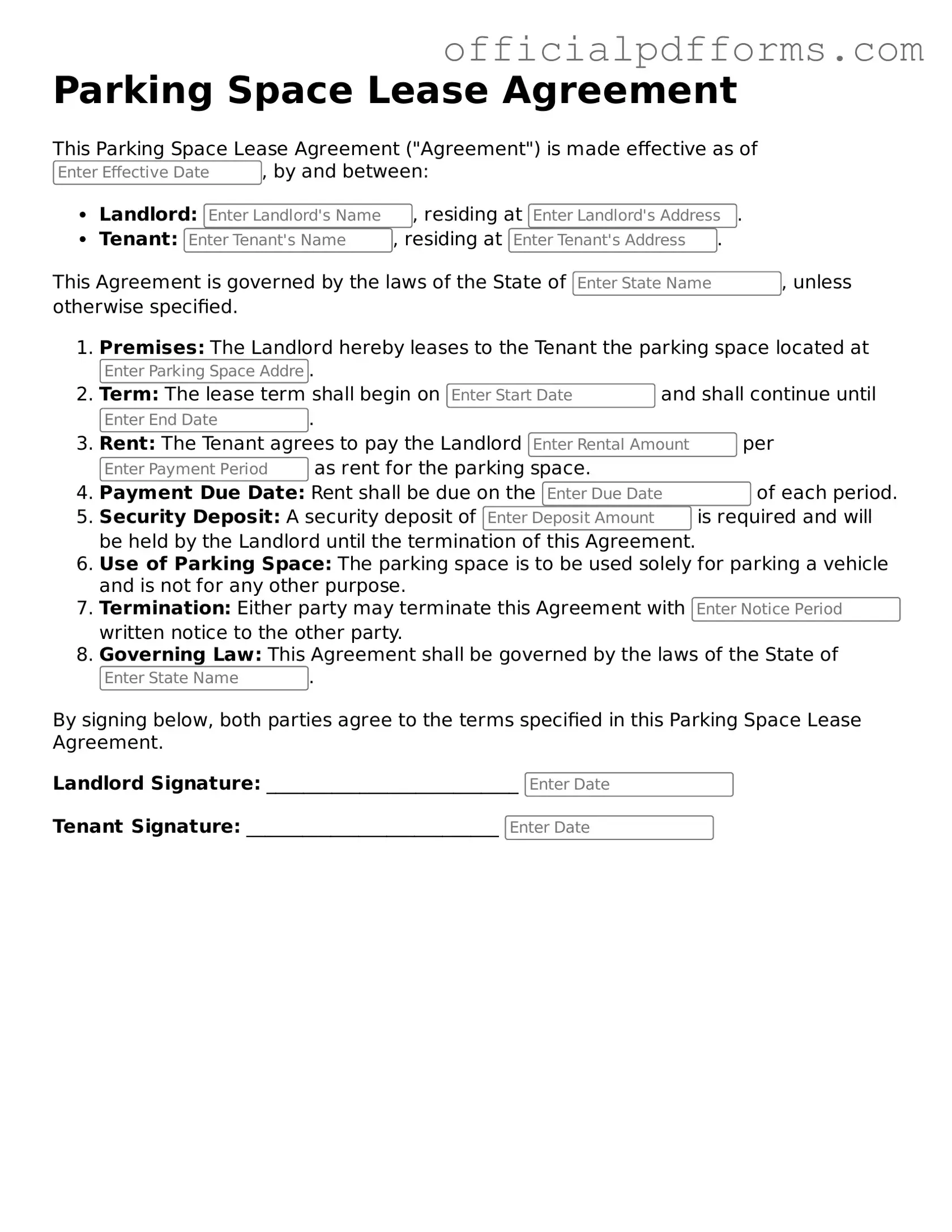What is a Parking Space Lease Agreement?
A Parking Space Lease Agreement is a legal document that outlines the terms and conditions under which a property owner (lessor) allows another individual (lessee) to use a designated parking space for a specified period. This agreement ensures that both parties understand their rights and responsibilities regarding the use of the parking space.
Who needs a Parking Space Lease Agreement?
Anyone who wishes to rent or lease a parking space can benefit from this agreement. This includes property owners who want to monetize their unused parking spaces and individuals or businesses that need a secure location to park their vehicles. It is particularly useful in urban areas where parking is limited.
What key elements should be included in the agreement?
A comprehensive Parking Space Lease Agreement should include the following elements:
-
Parties Involved:
Clearly identify the lessor and lessee.
-
Description of the Parking Space:
Specify the exact location and any identifying details of the space.
-
Lease Term:
Define the start and end dates of the lease.
-
Payment Terms:
Outline the rental amount, payment frequency, and acceptable payment methods.
-
Use of Space:
State any restrictions on how the space can be used.
-
Termination Conditions:
Describe the conditions under which either party can terminate the agreement.
-
Liability and Insurance:
Clarify the responsibilities regarding damages or accidents that may occur.
How long is a typical lease term?
The lease term can vary widely depending on the needs of both parties. Common terms include month-to-month leases, which provide flexibility, and longer-term leases that may last from six months to several years. It is essential to choose a term that aligns with the lessee's parking needs and the lessor's willingness to commit.
What happens if the lessee does not pay rent?
If the lessee fails to pay rent as outlined in the agreement, the lessor has the right to take action. This may include charging late fees, sending a notice of default, or ultimately terminating the lease. It is crucial for both parties to understand the consequences of non-payment and to include clear terms regarding this in the agreement.
Can the agreement be modified after it is signed?
Yes, the Parking Space Lease Agreement can be modified, but any changes must be agreed upon by both parties and documented in writing. Verbal agreements or informal changes are generally not enforceable, so it is best to create an amendment to the original agreement to ensure clarity and legality.
Is it necessary to have the agreement notarized?
Notarization is not typically required for a Parking Space Lease Agreement to be valid. However, having the document notarized can provide an additional layer of authenticity and may be beneficial if disputes arise in the future. It is always a good practice to keep signed copies for both parties.
What if there are disputes between the lessor and lessee?
In the event of a dispute, the first step is often to refer back to the terms outlined in the Parking Space Lease Agreement. Open communication between the parties can help resolve issues amicably. If necessary, mediation or legal action may be pursued, depending on the severity of the dispute and the terms of the agreement.
Can I use the parking space for commercial purposes?
Whether the parking space can be used for commercial purposes depends on the terms of the lease agreement. If the lessee intends to use the space for business-related activities, this should be explicitly stated and agreed upon in the contract. It is important to clarify any restrictions that may apply to avoid potential conflicts.
